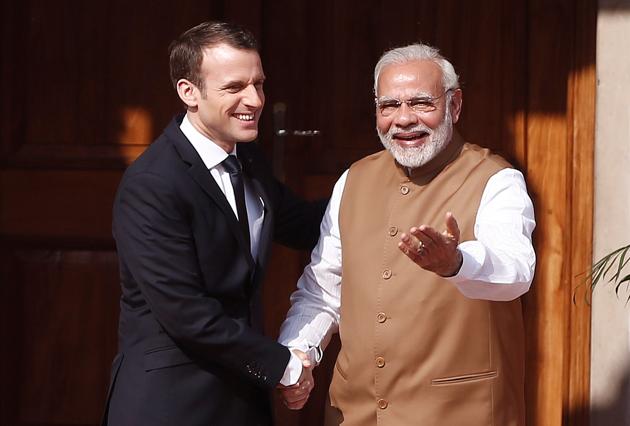What Indo-Pacific means for India
It is the most recent and the most nebulous (in terms of defining with clarity), and the most straightforwardly strategic in its orientation. From an Indian perspective, it appears a natural evolution of our ‘Look/Act policy’ as an increasingly larger share of our GDP is accounted for by external trade of which a growing proportion traverses through this region. The term also has obvious linkages to ‘Asia Pacific’, which has been in use for a long time but with the obvious difference that the Indo-Pacific strongly evokes a maritime perspective.
During the recent visit of the President of Vietnam, Tran Dai Quang, Prime Minister Narendra Modi had spoken of both countries working for “an independent, open and prosperous Indo-Pacific region”. The visit of the President of France, Emmanuel Macron, saw a Joint Strategic Vision of India-France Cooperation in the Indian Ocean Region, and this document refers to India’s central position in the ‘Indo-Pacific’, which has emerged as a major plank in our understanding of “acting East”. The terminological change ---- from ‘looking’ to ‘acting East’ --- represents an expansion of our focus area far beyond Southeast Asia. The Look East policy now represents a series of overlapping but concentric circles.

Chronologically, it is the middle or the South East Asian/Asean circle, which was the first to emerge with the Policy of Look East unveiled by former PM Narasimha Rao in Singapore in 1992. The 25th anniversary of this policy was observed with the presence of the Asean Heads of State or Government during the Republic Day celebrations.
Rao’s was the classic look east policy --- driven at both the bilateral and multilateral level - the former through bilateral relationships with the Asean member countries and the latter by using Asean as a regional organisation of the South East Asian countries. This was originally a trade and economy-driven relationship. although its security and strategic dimensions have steadily expanded.
The circle closest to us geographically emerged some years later between 1997 and 2004. In the former years, Bangladesh, India, Sri Lanka and Thailand formed BIST-EC (EC stood for economic cooperation). Myanmar joined in a few months later. In 2004, Nepal and Bhutan became part of the grouping, which named itself BIMSTEC. In 2014, a permanent secretariat was established in Dhaka.
If trade, economic and finance were the key drivers behind the India-Asean relationship, connectivity is the buzzword in BIMSTEC. India’s Northeast and Myanmar connect the South with South East Asia. If this physical proximity is converted into real connectivity, the dividends are enormous for a sub-region otherwise wracked by poor infrastructure and insurgent groups. BIMSTEC also evokes narratives of more fundamental unities and continuities, as it comprises countries that surround the Bay of Bengal.
Today, BIMSTEC lacks energy. A late boost came on its 20th anniversary in 2017 when India found that the organisation was better suited to implement a programme of regional cooperation and connectivity rather than SAARC where Pakistan could successfully obstruct initiatives. Much like the India-ASEAN interface, BIMSTEC too is powered by key bilateral relationships apart from the regional focus given by a multilateral organisation.
The third concentric circle is the Indo-Pacific. It is the most recent and the most nebulous (in terms of defining with clarity), and the most straightforwardly strategic in its orientation. From an Indian perspective, it appears a natural evolution of our ‘Look/Act policy’ as an increasingly larger share of our GDP is accounted for by external trade of which a growing proportion traverses through this region. The term also has obvious linkages to ‘Asia Pacific’, which has been in use for a long time but with the obvious difference that the Indo-Pacific strongly evokes a maritime perspective.
The new emphasis on the term and its frequent use by the current US administration is, however, related to the important new strategic development of our times - the assertion of China’s power and in particular maritime power both in the South as also, even closer to us, in the Indian Ocean.
This leads to the rise of similar thinking in India, Japan, and others apart from the US. Of course, many of its details have to be fleshed out. Unlike in the case of BIMSTEC and Asean, in the Indo-Pacific there isn’t a tightly defined group of countries, which make for India to develop bilateral and multilateral linkages. So, debates about the policy utility of the term Indo-Pacific will inevitably take place given the wide expanse it denotes. For India however, its lasting takeaway may well be that it forces us to imagine ourselves and our interests in maritime terms. This is not a small takeaway.
TCA Raghavan is former Indian High Commissioner to Pakistan and Singapore.
The views are personal






